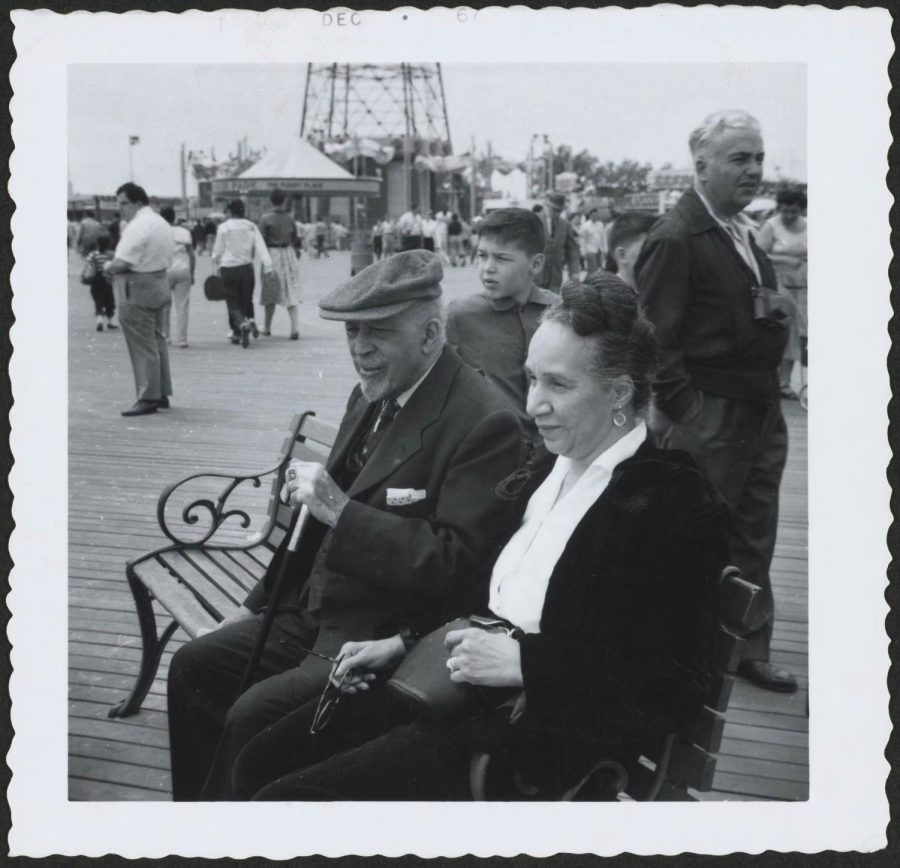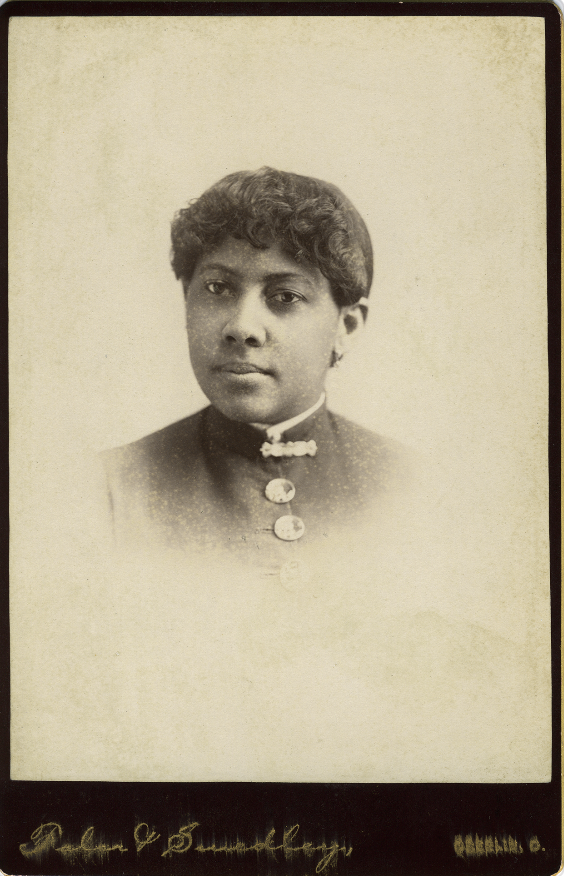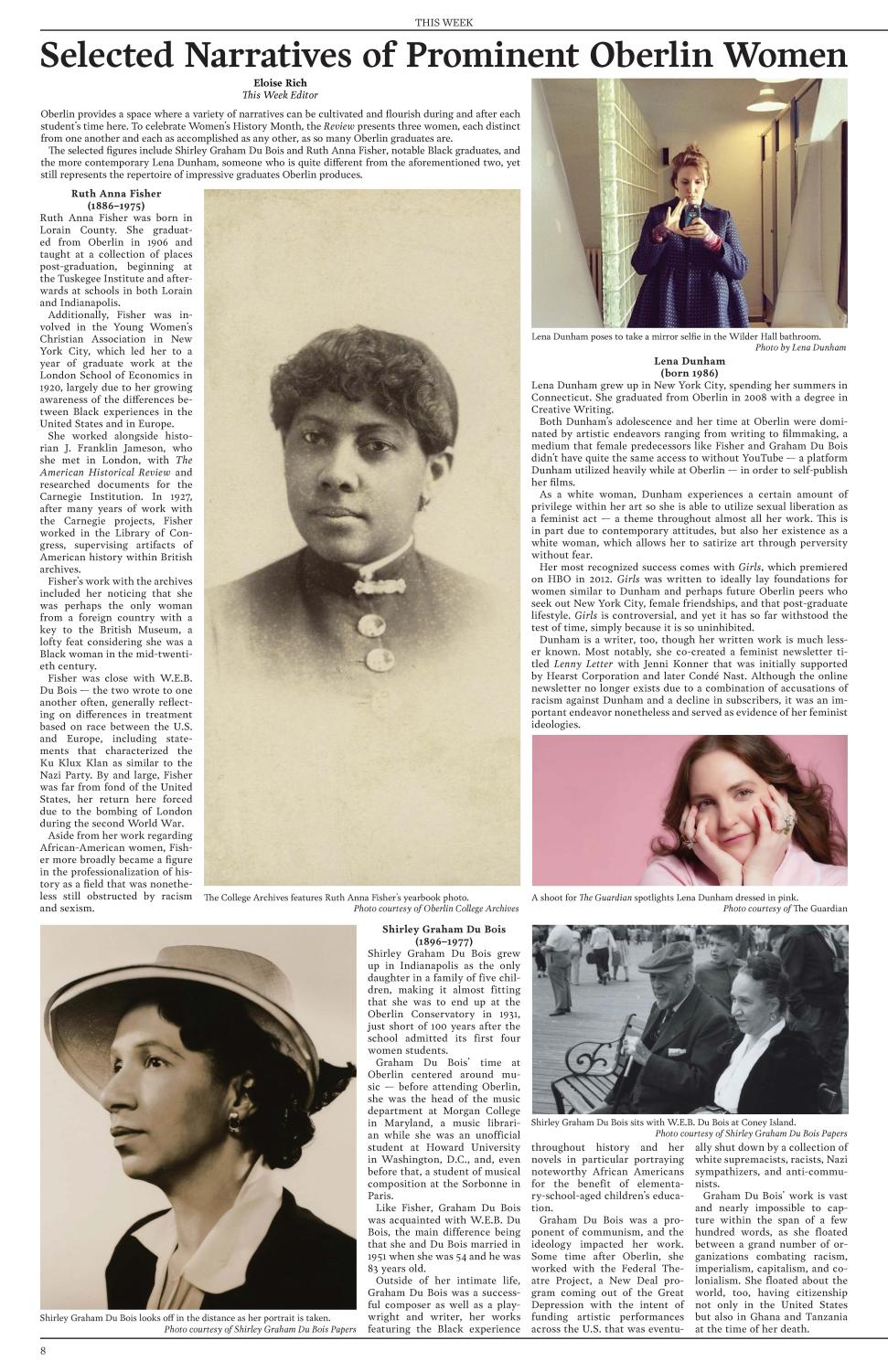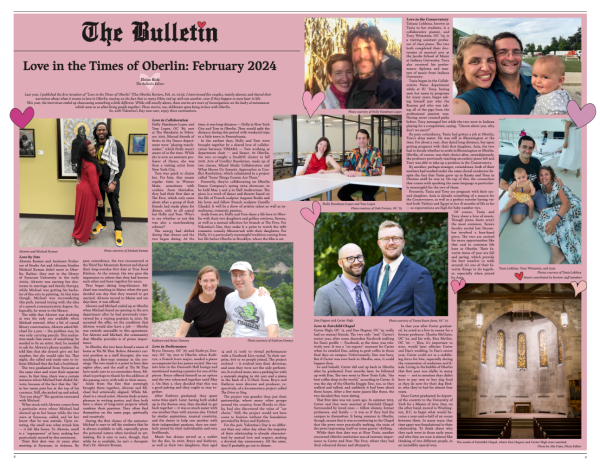Selected Narratives of Prominent Oberlin Women
Oberlin provides a space where a variety of narratives can be cultivated and flourish during and after each student’s time here. To celebrate Women’s History Month, the Review presents three women, each distinct from one another and each as accomplished as any other, as so many Oberlin graduates are.
The selected figures include Shirley Graham Du Bois and Ruth Anna Fisher, notable Black graduates, and the more contemporary Lena Dunham, someone who is quite different from the aforementioned two, yet still represents the repertoire of impressive graduates Oberlin produces.
Ruth Anna Fisher was born in Lorain County. She graduated from Oberlin in 1906 and taught at a collection of places post-graduation, beginning at the Tuskegee Institute and afterwards at schools in both Lorain and Indianapolis.
Additionally, Fisher was involved in the Young Women’s Christian Association in New York City, which led her to a year of graduate work at the London School of Economics in 1920, largely due to her growing awareness of the differences between Black experiences in the United States and in Europe.
She worked alongside historian J. Franklin Jameson, who she met in London, with The American Historical Review and researched documents for the Carnegie Institution. In 1927, after many years of work with the Carnegie projects, Fisher worked in the Library of Congress, supervising artifacts of American history within British archives.
Fisher’s work with the archives included her noticing that she was perhaps the only woman from a foreign country with a key to the British Museum, a lofty feat considering she was a Black woman in the mid-twentieth century.
Fisher was close with W.E.B. Du Bois — the two wrote to one another often, generally reflecting on differences in treatment based on race between the U.S. and Europe, including statements that characterized the Ku Klux Klan as similar to the Nazi Party. By and large, Fisher was far from fond of the United States, her return here forced due to the bombing of London during the second World War.
Aside from her work regarding African-American women, Fisher more broadly became a figure in the professionalization of history as a field that was nonetheless still obstructed by racism and sexism.
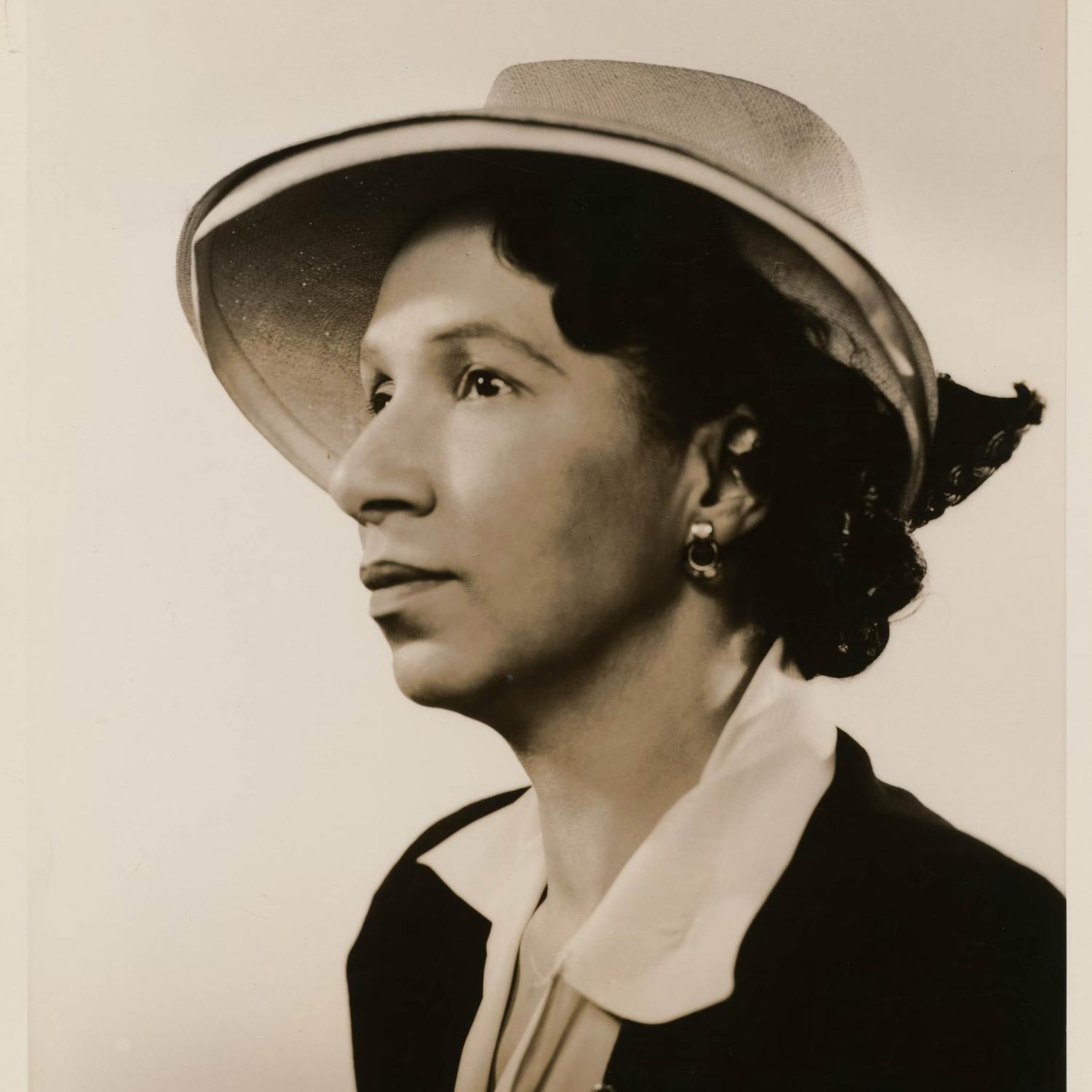 Shirley Graham Du Bois (1896–1977)
Shirley Graham Du Bois (1896–1977)
Shirley Graham Du Bois grew up in Indianapolis as the only daughter in a family of five children, making it almost fitting that she was to end up at the Oberlin Conservatory in 1931, just short of 100 years after the school admitted its first four women students.
Graham Du Bois’ time at Oberlin centered around music — before attending Oberlin, she was the head of the music department at Morgan College in Maryland, a music librarian while she was an unofficial student at Howard University in Washington, D.C., and, even before that, a student of musical composition at the Sorbonne in Paris.
Like Fisher, Graham Du Bois was acquainted with W.E.B. Du Bois, the main difference being that she and Du Bois married in 1951 when she was 54 and he was 83 years old.
Outside of her intimate life, Graham Du Bois was a successful composer as well as a playwright and writer, her works featuring the Black experience throughout history and her novels in particular portraying noteworthy African Americans for the benefit of elementary-school-aged children’s education.
Graham Du Bois was a proponent of communism, and the ideology impacted her work. Some time after Oberlin, she worked with the Federal Theatre Project, a New Deal program coming out of the Great Depression with the intent of funding artistic performances across the U.S. that was eventually shut down by a collection of white supremacists, racists, Nazi sympathizers, and anti-communists.
Graham Du Bois’ work is vast and nearly impossible to capture within the span of a few hundred words, as she floated between a grand number of organizations combating racism, imperialism, capitalism, and colonialism. She floated about the world, too, having citizenship not only in the United States but also in Ghana and Tanzania at the time of her death.
Lena Dunham grew up in New York City, spending her summers in Connecticut. She graduated from Oberlin in 2008 with a degree in Creative Writing.
Both Dunham’s adolescence and her time at Oberlin were dominated by artistic endeavors ranging from writing to filmmaking, a medium that female predecessors like Fisher and Graham Du Bois didn’t have quite the same access to without YouTube — a platform Dunham utilized heavily while at Oberlin — in order to self-publish her films.
As a white woman, Dunham experiences a certain amount of privilege within her art so she is able to utilize sexual liberation as a feminist act — a theme throughout almost all her work. This is in part due to contemporary attitudes, but also her existence as a white woman, which allows her to satirize art through perversity without fear.
Her most recognized success comes with Girls, which premiered on HBO in 2012. Girls was written to ideally lay foundations for women similar to Dunham and perhaps future Oberlin peers who seek out New York City, female friendships, and that post-graduate lifestyle. Girls is controversial, and yet it has so far withstood the test of time, simply because it is so uninhibited.
Dunham is a writer, too, though her written work is much lesser known. Most notably, she co-created a feminist newsletter titled Lenny Letter with Jenni Konner that was initially supported by Hearst Corporation and later Condé Nast. Although the online newsletter no longer exists due to a combination of accusations of racism against Dunham and a decline in subscribers, it was an important endeavor nonetheless and served as evidence of her feminist ideologies.


